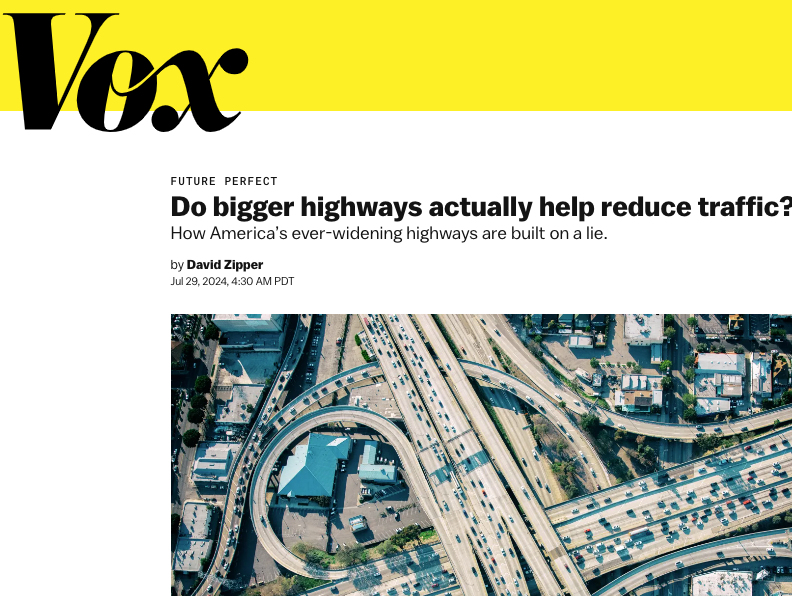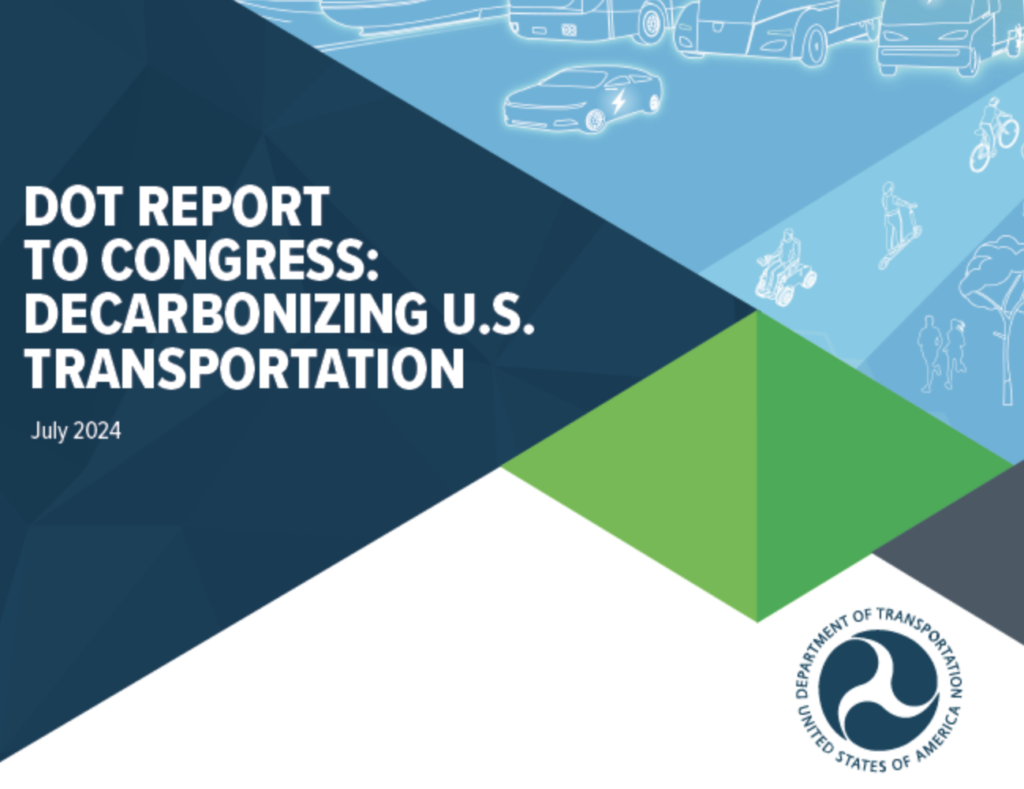Must Read
Induced Demand and Climate Denial. As we’ve long said, the favorite folk tale of state DOTs and highway boosters is the idea that the primary solution to reducing greenhouse gas emissions is lowering the amount of time cars spend indling in traffic. If we widening the highway so that cars could just go faster and idle less, then greenhouse gases would go down. David Zipper, at Vox, refutes writing
Framing highway widening as a cure for climate change has allowed state DOTs to justify spending billions of dollars in their ongoing war on gridlock. Businesses and residents alike complain about traffic, and widening the road is an easy way to placate them because it feels like progress. But decades of research — along with common sense — show that congestion will inevitably return. New roadway lanes invite more cars, which generate more emissions, trapping us in a cycle of ever-increasing driving that only makes it harder to slow the increase in global temperatures.
What will it take to decarbonize transportation, which is now the nation’s largest source of greenhouse gases. There’s a useful new report from the US Department of Transportation that addresses this issue. While better technology—cleaner cars and cleaner fuel—have their parts to play, the USDOT report makes it clear that technology alone won’t be enough: We’ve got to redesign and rearrange the places we live so we don’t have to drive as much or as far. Helpfully, USDOT frames this not as an “eat your peas” admonition, but as furthering the goal of greater convenience: having more daily destinations close at hand saves time, money and the climate.
Focusing entirely on vehicle electrification without investing in strategies to improve the convenience and efficiency of the transportation system could continue a trend of increased driving and goods movement that undermine the GHG emissions reduction benefits of improved fuel economy and electrification. The U.S. will not be able to decarbonize the transportation sector by midcentury without addressing increased demand for vehicle travel. By providing Americans options to use more efficient modes, such as public transportation and rail, we may slow or reverse VMT growth.
Manufacturing consent, manipulating data, fighting transparency: All in a days work for your state DOT. This story from Pennsylvania mirrors the experience of almost everyone whose dealt with a state DOT “public outreach” process. Here, Pennsylvania DOT (PennDOT) conducted a survey about the I-95 freeway through Philadelphia, and then presented doctored results to claim that the the agency’s preferred option was most highly rated. Attorney Megan Shannon asked to get the actual survey data, and was initially denied based on the claim that these were “investigative” records under the state’s right to know law. Ultimately PennDOT was forced to release the data, but then only provided a PDF file, rather than the underlying Excel file. And once analyzed, the data showed that the agency twisted the survey results to exaggerate support for its preferred option.
Why do city’s charge so much more for bikes than buses (and cars)? A Bloomberg story looks at the generally much higher rates that cities charge for bike rentals than for public transit. While transit rides are generally subsidized to the tune of several dollars per rider, bike rental schemes have far smaller subsidies. As Bloomberg writes:
The costs come from a confluence of factors. Unlike public transit, which is subsidized by the government, many shared micromobility systems are operated privately or by nonprofits — or rely primarily on private funds. “They set the prices based on how much it costs to run the program,” said Camille Boggan, the program manager who led the NACTO report.
This data highlights a pervasive problem with transportation: Why are prices so poorly aligned with our policy objectives. Cites throughout North America essentially give away most of their road space for free for private car parking and use, and yet charge substantial per ride fees for modes (transit and rental bikes) that are safer, more sustainable, which relieve traffic congestion.


